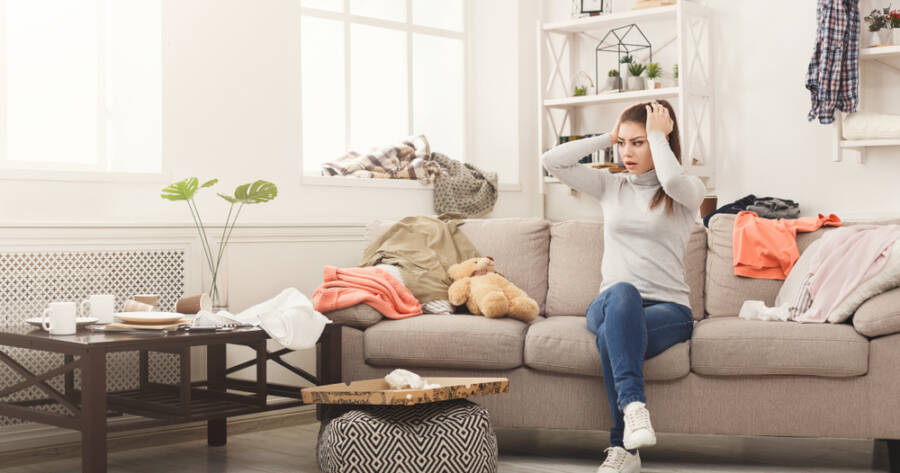Home should be a place of comfort and relaxation, but too much clutter and noise can make it stressful. Messy spaces and constant background sounds often lead to frustration, anxiety, and even difficulty focusing. Many people don’t realize how their environment affects their mood until they start making changes. By reducing clutter and controlling noise, it’s possible to create a peaceful, welcoming home that improves mental well-being.
The Hidden Stress of Clutter
Clutter is more than just a messy room—it can create a sense of chaos that makes relaxation difficult. When piles of papers, clothes, or dishes build up, they serve as a constant reminder of unfinished tasks. This can lead to feelings of overwhelm and stress.
Living in a cluttered space also affects focus. It becomes harder to concentrate when there are too many things competing for attention. Studies show that excessive clutter can even increase anxiety, making people feel trapped in their own homes.
The best way to handle clutter is to tackle it step by step. Start with small areas, such as a kitchen counter or a single drawer, and make decluttering a daily habit. Giving everything a designated place reduces the chance of mess returning. Once a space is clear, it feels easier to relax and enjoy time at home.
The Impact of Noise on Mood
Noise pollution inside the home can be just as stressful as clutter. Background sounds from televisions, loud conversations, or outside traffic can increase irritability without people even realizing it. Constant noise makes it harder to focus, disrupts sleep, and can even raise stress levels.
Reducing unnecessary noise can make a home feel more peaceful. Turning off the television when no one is watching, closing windows to block outside sounds, or using noise-canceling curtains can all help. Soft background music or white noise machines can also replace disruptive sounds with more calming alternatives. A quieter home creates a better space for rest and relaxation.
Creating a Calming Home Environment
A well-organized, quiet home can have a big impact on mental well-being. Simple design changes can make a space feel more comfortable and inviting. Soft lighting, calming colors, and natural elements, such as plants, help create a peaceful atmosphere.
Bringing nature indoors can also boost mood. Houseplants not only improve air quality but also create a more relaxing environment. Studies show that being surrounded by greenery can reduce stress and increase happiness. Placing a few plants around the home is an easy way to improve both mood and indoor air quality.
Another way to create a soothing environment is by reducing unnecessary decorations. While personal touches make a home feel special, too many items can be visually overwhelming. Choosing a few meaningful decorations rather than filling every surface helps maintain a sense of order.
The Benefits of Routine Cleaning and Organization
A clean and organized home doesn’t just look better—it feels better too. Regular cleaning can reduce stress and improve mood. Dust, pet hair, and other allergens can make a space feel stuffy and uncomfortable, leading to irritability and fatigue. Keeping surfaces clean and clutter-free makes a home feel fresher and more inviting.
Establishing a simple cleaning routine helps prevent mess from building up. A few minutes each day spent tidying up can make a big difference. Small habits, such as making the bed each morning or putting items back where they belong, create a sense of order that improves overall well-being.
Finding Balance and Enjoying Your Space
Home should be a place of rest, not stress. Making small changes to reduce clutter and noise can transform any space into a calming retreat.
Taking the time to organize, clean, and create a peaceful atmosphere leads to a healthier, happier home. By being mindful of how the environment affects mood, it’s possible to enjoy a space that truly feels like a sanctuary.

